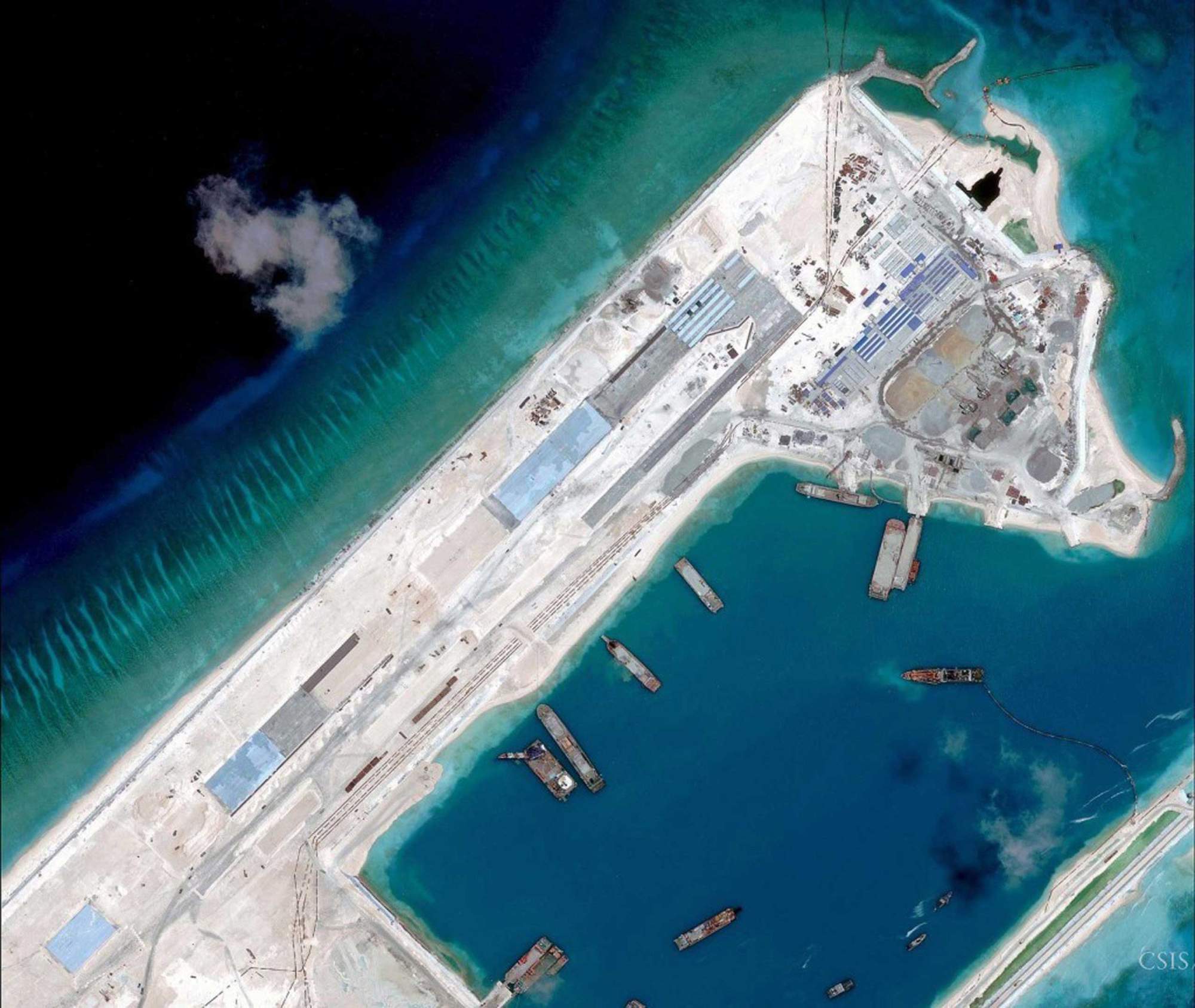
WASHINGTON, D.C. — China’s recent actions to militarize the South China Sea have changed the operational landscape, and the U.S. Pacific Command needs more attack submarines and long-range surface missiles to keep up with the evolving threat, PACOM commander Adm. Harry Harris told the Senate Armed Services Committee today.
China’s 10,000-foot runway in the Spratly Islands, as well as the addition of surface-to-air missiles and high-frequency radar systems on the islands over the past week, are pushing regional partners closer to the U.S. military but also forcing PACOM to look at addressing the region differently.
“I think China’s… surface-to-air missiles, on Woody Island; its radars, new radars on Cuarteron Reef over here; the runway, the 10,000-foot runway… on Fiery Cross Reef and other places; these are actions that are changing, in my opinion, the operational landscape in the South China Sea,” Harris told the senators.
“The DF-21 (ballistic missile), which they have, and the DF-26, which they are developing, could pose a threat to our carriers. I think, though, our carriers are resilient and we have the capability to do what has to be done”
To protect the aircraft carriers and maintain stability in the region despite Chinese aggression in the South China Sea, Harris said he needs more submarines, more long-range weapons, and more intelligence, surveillance and reconnaissance (ISR).
“I asked for increased surface-to-surface weapons,” he said of his budget talks with the Navy and Pentagon.
“When I started flying P-3s back in the late 70s we had the Harpoon missile, and that’s the same missile we have today. And we need to have increased lethality and reach and speed that I talked about before, and I’m grateful that the service has responded to that request and in the FY17 budget there are increased funding for programs to increase lethality for surface-to-surface missiles.”
Harris mentioned the Standard Missile-6 surface-to-surface mode and the Long-Range Anti-Surface Missile (LRASM) as capabilities the Navy needs to bring online quickly. He also said the rate of buys of the F-35 should be increased, and the PACOM area of operations needs more submarines.
He added that more F-35 Joint Strike Fighters, and faster delivery to the fleet, would help as well. With a vast area to cover and a limited number of ships and bases to operate from, “if we don’t have presence then you better have reach, and that reach comes from submarines and aircraft and the like,” Harris said.
Sen. Kelly Ayotte (R-N.H.) said the Navy told her the service can only meet about 62 percent of combatant commander requests for attack submarines, and Harris said PACOM sees a comparable shortfall.
“The Pacific is the principle space where submarines are the most important warfighting capability we have. As far as Virginia-class submarines, it’s the best thing we have,” Harris said.
“As I mentioned before, we have a shortage in submarines. My submarine requirement is not met in PACOM, and I’m just one of many [combatant commanders] that will tell you that. But that’s our principle asymmetric advantage over China and any other adversary, and I think we have to keep after it.”
Also during the hearing, Harris addressed the ongoing debate regarding adding a second forward-deployed aircraft carrier to the region, saying that, in addition to the anti-ship missile threat from China to be aware of, “there are some problems with that in terms of political pieces with Japan, costs, all that.”
Still, “I believe that as a [combatant commander] I want as much capability as close to the fight as I can,” Harris added.
Despite Harris’s assurances that PACOM is managing the evolving Chinese threat, committee chairman Sen. John McCain (R-Ariz.) called for more action to counter China’s increasingly militant acts.
“Over the past several years, China has acted less like a ‘responsible stakeholder’ of the rules-based order in the Asia-Pacific region and more like a bully. China’s increasingly assertive pattern of behavior calls into serious question whether China’s rise will in fact be peaceful. Despite U.S. efforts to rebalance to the Asia-Pacific, U.S. policy has failed to adapt to the scale and velocity of the challenge we face,” McCain said.
“For example, the Administration has insisted that China must cease its ‘reclamation, construction, and militarization’ in the South China Sea and that it will ‘fly, sail, and operate wherever international law allows.’ But after more than a year of this rhetoric, China’s reclamation, infrastructure construction, and militarization have all continued. Last week we saw press reports that China had deployed the HQ-9 surface-to-air missile system to Woody Island in the Paracel Islands. And yesterday, satellite photos made available not by the United States Government, but by the Center for Strategic and International Studies, appear to show a high-frequency (possibly over-the-horizon) radar on reclaimed land on Cuarteron Reef in the Spratly Islands. If true, this deployment would represent a blatant violation of Xi Jinping’s September 2015 commitment to President Obama in the Rose Garden that China did ‘not intend to pursue militarization.’”





